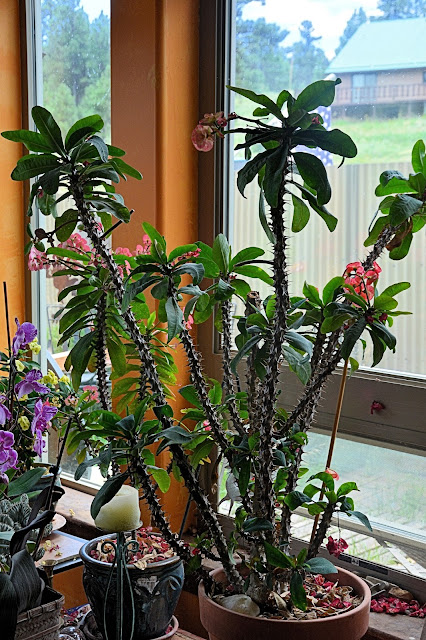Eagle Nest Dam
 |
| Tour of Eagle Nest Dam |
Eagle Nest Dam is the largest privately built dam in the United States. It was begun by the Springer family in 1917 and completed in 1920. It and the reservoir beyond it one was privately owned by the CS Ranch which recently sold it to the state of New Mexico. Eagle Nest Lake is now a state park, but the dam and the waters in the lake are another matter all together. Water is well regulated in New Mexico especially during a drought. The lake is now at 25% of its normal capacity, and the water in the lake are water right lease holds of Raton, Cimarron, and historic ranches in the area like the UU Bar and the CS Ranch.
Game and Fish department also get involved because the Cimarron River is an active fishery of the state. Our guide was a state engineer and the Gateway Museum secured permission of the land owners below the dam for us to gain access to the area. Some 100 locals and tourists attended this rare event. I have lived here almost twenty years and this was my first visit.
As a sometimes free lance writer, an amateur historian, and a professional photographer not taking advantage of this tour was inconceivable. But the professional photographer won out for my interest once we left the Gateway Museum and historical perspective part of the tour give by Jack Schweitzer.
The Springer family obviously picked the narrow part of the canyon with lots of sturdy rocks to hold the dam in place. It is leaking when the water is higher but that only adds to the charm. I was immediately taken by the half moon hovering over the dam as well as the mix of textures.
 |
| Eagle Roost Rock |
 |
| Outflow into Cimarron River |
 |
| Eagle Roost Rock close up |
One of my must sees of the trip was the train tunnel. It was built to house a spur of the rail road from its terminus at Ute Park through Moreno Valley and over Palo Flechado into Taos. It was a much debated route as the residents of Red River wanted it to go over Bob Cat Pass and through their town. The politics probably killed the entire extension. But during the building of the dam the tunnel was used to transport supplies. I am not sure how the supplies got to the tunnel. Obviously there were once trestles.
 |
| Railway tunnel |
I would love the opportunity to go back without the 20 cars obscuring the natural beauty of this part of the Cimarron Canyon. And would love to have an extended coffee with Jack Schweitzer to get more historical information. He approached it from the ranching perspective and my research has always been from the train perspective. And I would love to get past private property to take pictures of the dam from the other side. I am working on the lost dog suggestion of Jack's. Or I could try the freelance writer approach.




Hi mates, how is all, and what you desire to say on the topic of this post,
ReplyDeletein my view its actually remarkable in support of me.
Where specifically is the RR tunnel relative to the Eagles Nest Dam?
ReplyDeleteIt is Eagle Nest (no s) and the tunnel is on private land to the south east and above the dam.
Delete